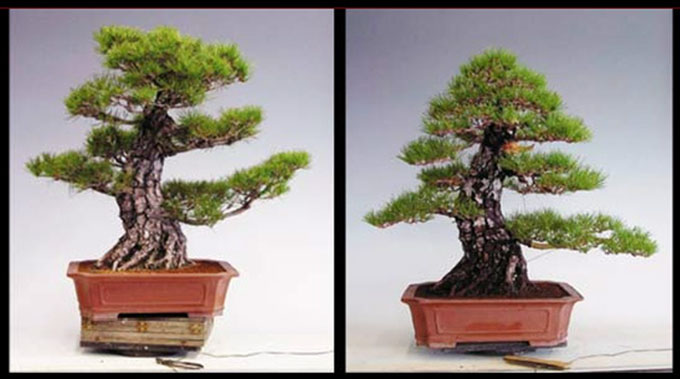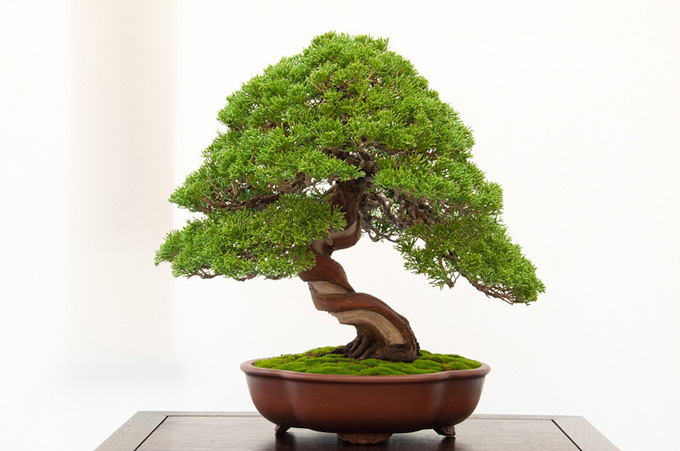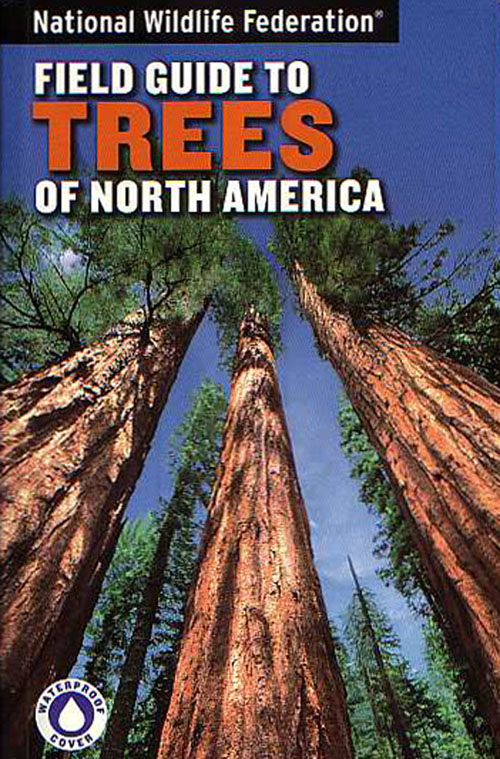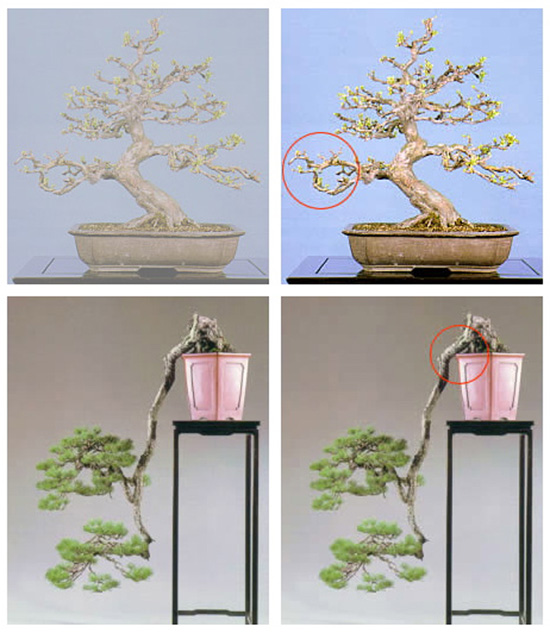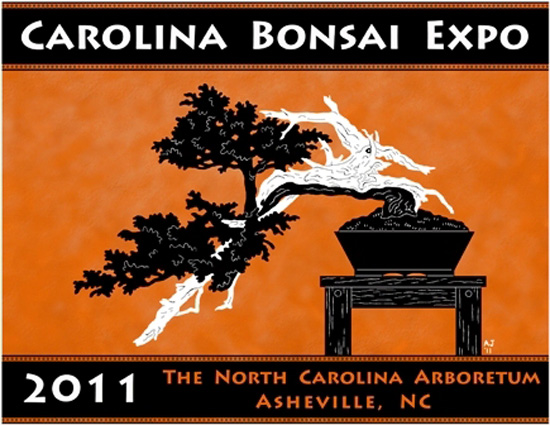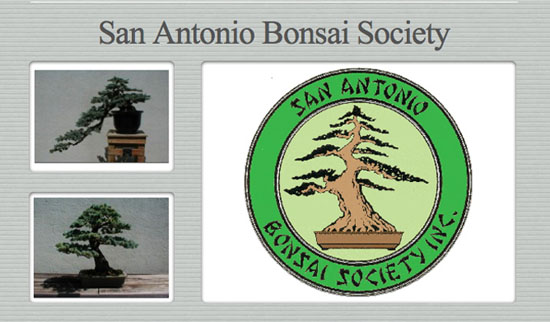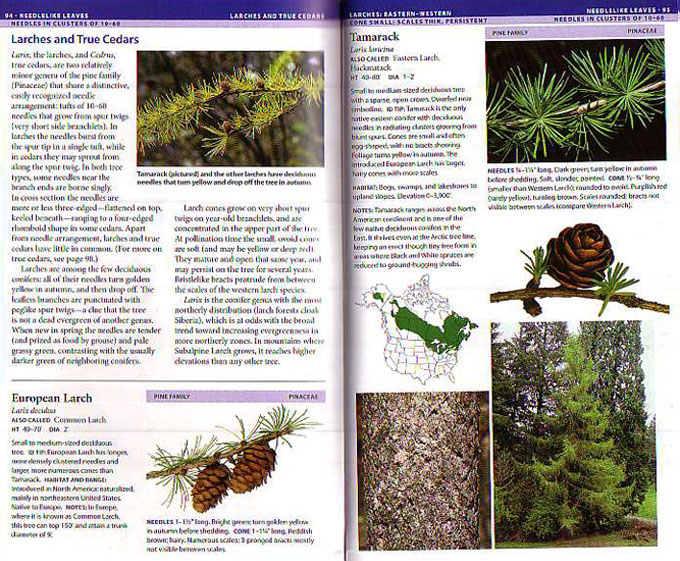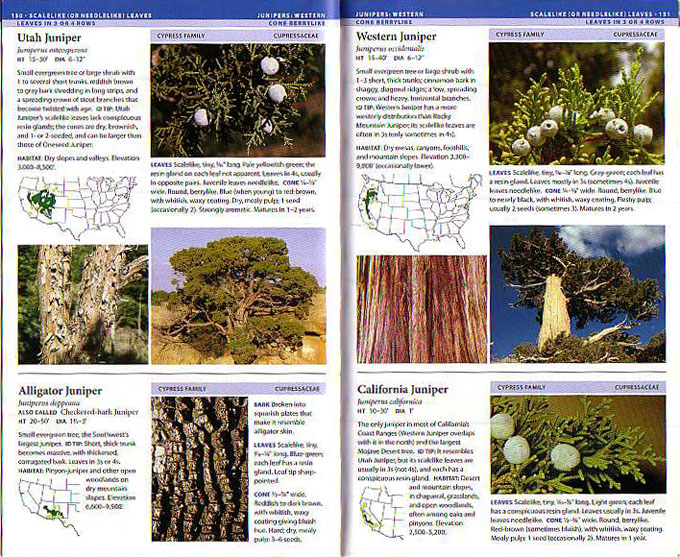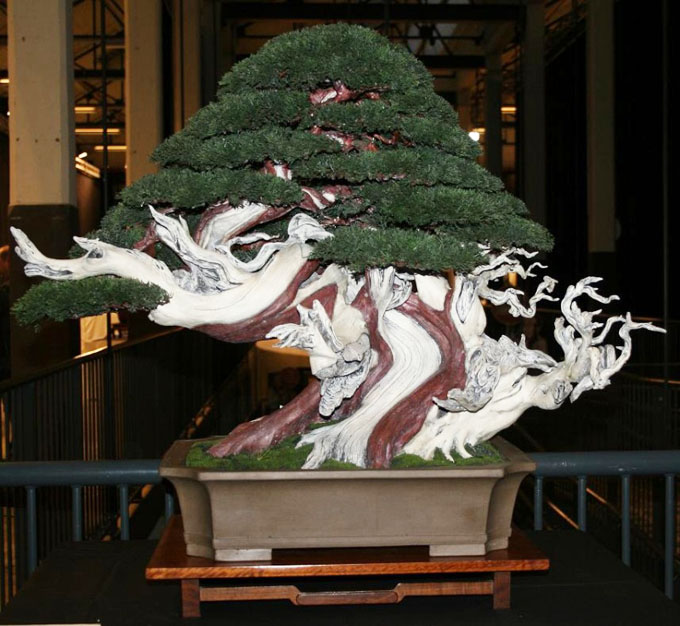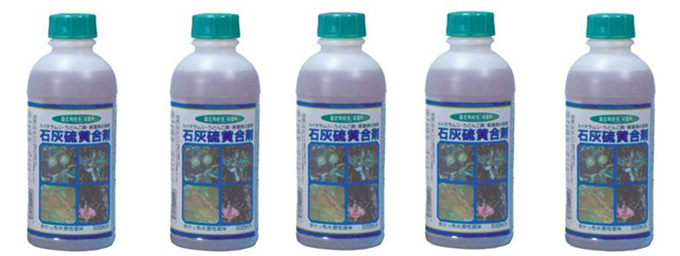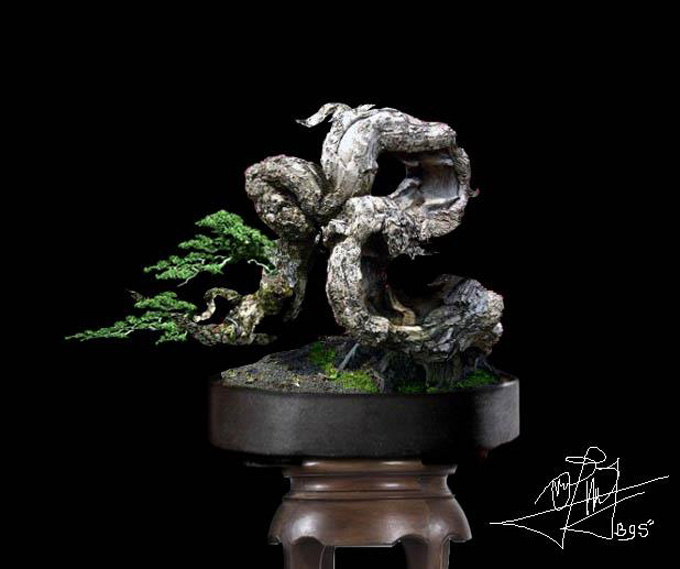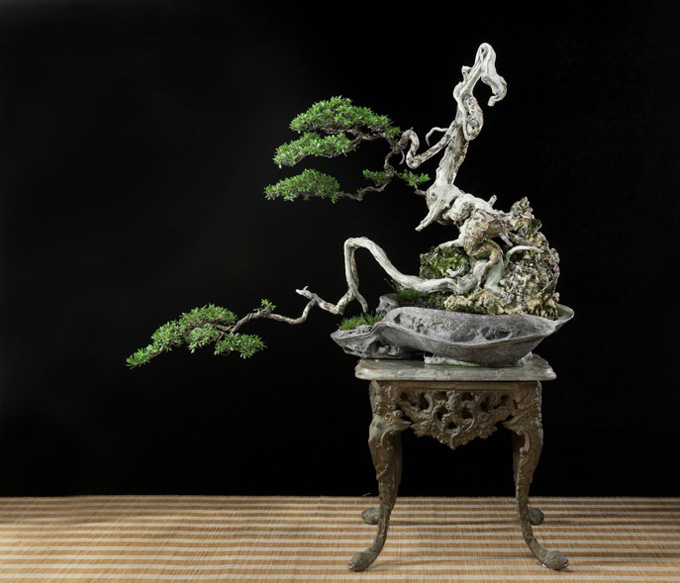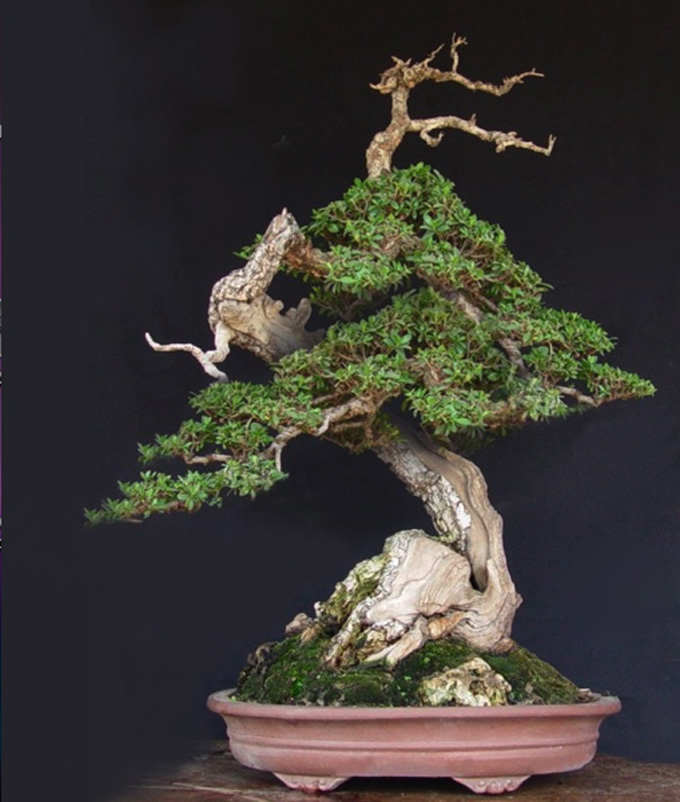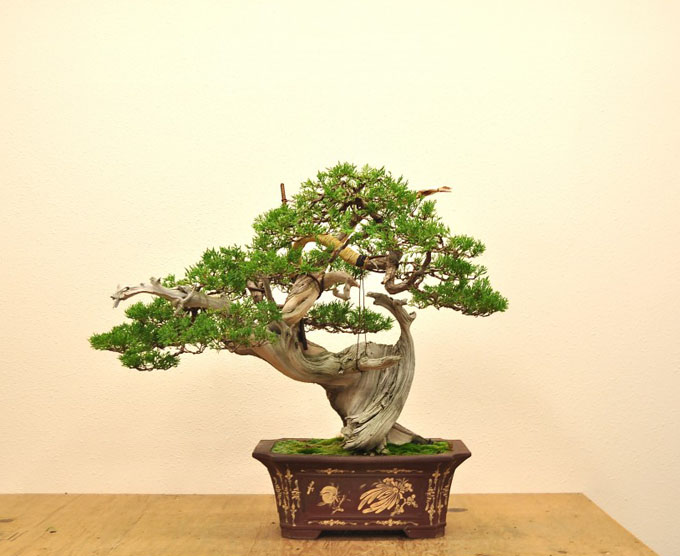 Dazzling deadwood. I think I see a live vein on the left edge of the trunk. Otherwise, this spectacular old specimen is a study in deadwood (with a little rebar thrown into the mix). It’s a Rocky Mountain juniper. The artist and owner is Ryan Neil, International Bonsai Mirai. The tree was originally collected by Andy Smith of Golden Arrow Bonsai (Stone Lantern offers Andy’s excellent DVD on collecting bonsai). Intenational Bonsai Mirai has a great little back story on this intriguing old tree.
Dazzling deadwood. I think I see a live vein on the left edge of the trunk. Otherwise, this spectacular old specimen is a study in deadwood (with a little rebar thrown into the mix). It’s a Rocky Mountain juniper. The artist and owner is Ryan Neil, International Bonsai Mirai. The tree was originally collected by Andy Smith of Golden Arrow Bonsai (Stone Lantern offers Andy’s excellent DVD on collecting bonsai). Intenational Bonsai Mirai has a great little back story on this intriguing old tree.
More daring high quality bonsai
Every time I visit Ryan Neil’s International Bonsai Mirai website something new and exciting turns up. In my estimation, Ryan could quit right now and still be considered major contributor to North American bonsai (and beyond). But Ryan isn’t quitting (and he’s young), so we can expect more daring high quality bonsai for a long time.
Bonsai blessings from the Rockies
I don’t know how many of us fully appreciate the quality of bonsai material coming out of the Rocky Mountains (and other notable western mountains). I suspect the surface has barely been scratched (so to speak) and with a little intelligence and restraint, that the supply could last for our grandchildren’s grandchildren (and so on) without any serious risk to numbers or to the environment. At least, I hope this is the case. In this vein, I think Andy Smith’s most excellent DVD on collecting provides some very intelligent guidelines on how to make this happen. If you combine Andy’s gentle wisdom with the deep and detailed knowledge of Larch Master Nick Lenz’ (Bonsai from the Wild), you’re off to a very good start on the subject collecting.
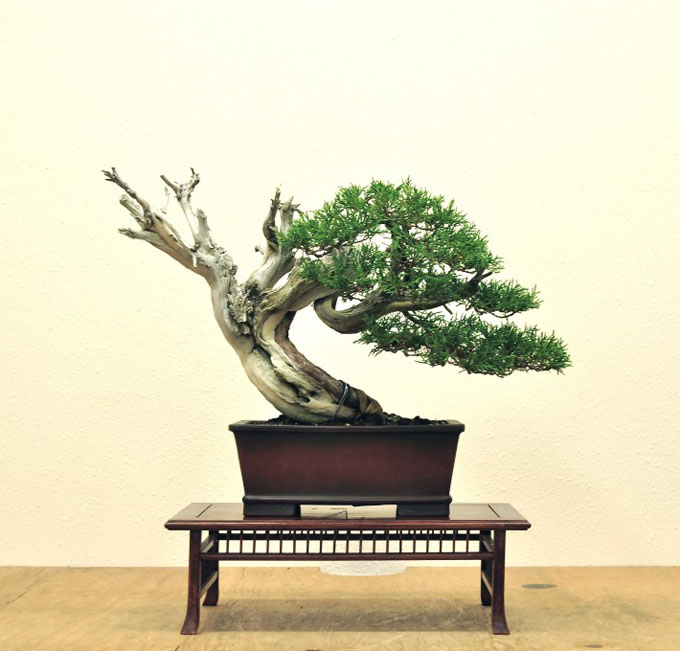 All three of the Rocky Mountain junipers in this post belong to Ryan Neil. This one was collected in 2008 by Randy Knight of Oregon Bonsai.
All three of the Rocky Mountain junipers in this post belong to Ryan Neil. This one was collected in 2008 by Randy Knight of Oregon Bonsai.
�
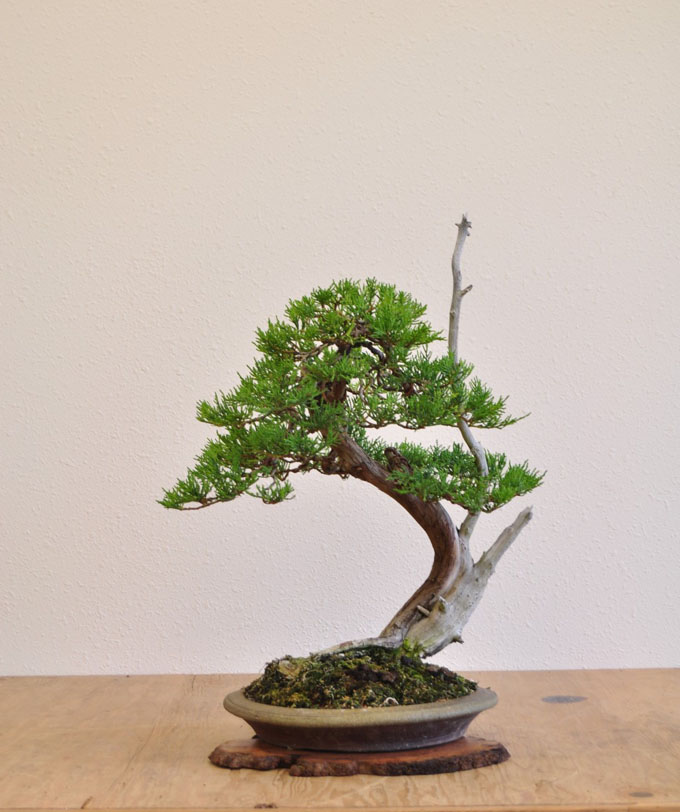 This one was also collected in 2008 by Randy Knight.
This one was also collected in 2008 by Randy Knight.
�
Source: Bonsai Bark Read more!
